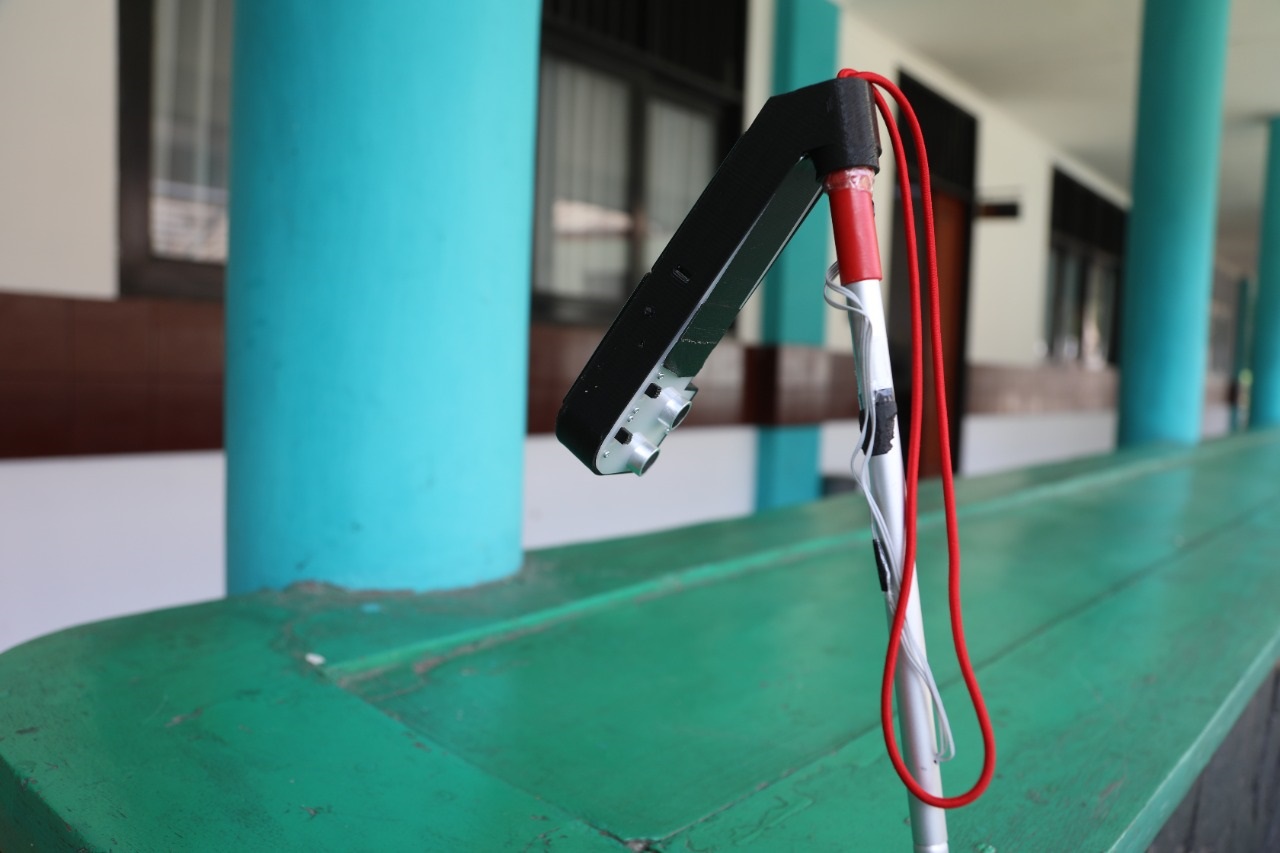MOSA’s Adaptive Cane to Encourage Persons with Vision Sensory Impairments to be More Independent

BEKASI (15 July 2021) – In accordance with the direction
of Social Minister Tri Rismaharini, Kartini Center Temanggung developed a pilot
project of an adaptive cane. This cane is equipped with various features to
facilitate the daily activities of people with visual impairments.
Social Minister Risma emphasized that the Ministry of Social Affairs is committed
to improving the welfare of the entire community, including people with
disabilities. For the initial stage, adaptive cane are prepared for 200 people
with visual impairments to help them to be more independent.
Social worker at Tan Miyat Center
Bekasi, Tri Putri Kurnianingsih welcomed the innovation which is very useful
for people with visual impairments.
"The current canes still have
many weaknesses that they cannot help the user identify, for example, a puddle of water. Sometimes they
have to hit a wall or fall over," said Putri at Tan Miyat Center Bekasi,
Wednesday (14/7/2021).
This adaptive cane can help visually
impaired people to handle various obstacles so that they can be more
independent in doing various daily activities.
"Alhamdulillah, it is a
brilliant innovation and must be immediately disseminated to all visually
impaired people on how to use it so that they can feel the benefits," she
said.
The head of the adaptive cane pilot project, Juena Sitepu who
accompanied the Kartini Center Temanggung team, stated that the assistive
device would come in handy for people with visual impairments.
"In addition to the adaptive
cane, we also develop sensor-equipped vest which is a package of assistive
devices with many benefits for people with visual sensory impairment,"
said Juena.
A member of the Kartini Center
Temanggung team, Windu Darojat, conveyed the details of the cane design and
features that can function as an identity of a person with a visual impairment
that can reduce the risk of accidents or injuries. This cane will also be
useful in disaster conditions because it is equipped with various advanced
features.
"The assembling
process is carried out by people with physical disabilities, hearing impairment
and speech disabilities, college students and a team of electronics
experts," said Windu.
Broadly speaking, the cane device
consists of two parts, the electronic module and the cane. The electronic
module consists of various sensors that can detect dangerous smoke and gases,
puddles of water, flames, and are equipped with a Global Positioning System
(GPS) which is automatically connected to smartphone.
"The cane itself is an ordinary
cane used by visually impaired people. But there are holes on the surface and a
sensor is implanted to detect the distance and conditions around it and will
respond quickly in the form of sound or vibration that can be felt and heard by
the cane holder," he said.
Meanwhile, the electronic module has
5 modes, namely vibration, sound, vibration and light, sound and light, and
panic button. The electronic module uses a battery that can be recharged using
solar cells for about half a day or by charging like a normal cellphone for 2-3
hours. It can also be charged from the LED light, but it takes even longer.
"In the future,
this adaptive cane as an innovation to help people with visual impairments will
continue to be evaluated and developed to be more useful and adapt to their
needs," he said.
Public Relations Bureau
Ministry of Social Affairs
 English
English
 Bahasa
Bahasa
